Pitești, city of the tulips
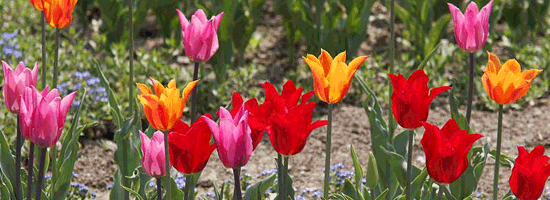
Pitești is the largest city of Argeș county, România.
Pitești is one of the oldest in Romania. Traces of human activity in the area dates back to the paleolithic era. Archeological finds have confirmed that the tribe of Dromihetes (IV-III b.c.) had roots in this area, being identified as "ordessenii" or "argessenii" (living on the banks of Argeșului). During the dacian and roma period, the city was part of Moesia Inferior and later of Dacia Malvensis. The most important monument of that time in the county is the roman castrum at Albota, a fortified military camp at the eastern border of Dacia.
Pitești was temporary residence to Basarab Țepeluș cel Tânăr, Mihnea cel Rău and Vlad cel Tânăr. Pitești evolved gradually from village to fair, attaining the title of "city" in the 14th century. Earliest documents mention it on may 20th 1388 when Mircea the Bătrân strengthens the Cozia monastery, mentioned as a mill on the border of Pitești". This makes Pitești, together with Câmpulung, Curtea de Argeș, Brăila and Slatina one of the oldest fairs.
.jpg) În
oraș au avut proprietăți numeroși boieri și dregători, dintre aceștia
cei mai de seamă au fost Goleștii, Izvoranii, Cantacuzinii, Craioveștii,
dar și doi domnitori, Mihai Viteazul (1593-1601) și Neagoe Basarab,
acesta din urmă construind între 1512 și 1521 la Pitești curtea voievodală.
În anul 1656, sub domnia lui Constantin Șerban și a doamnei Bălașa,
se construiește, pe fundațiile unui vechi lăcaș, Biserica Domnească
Sfântul Gheorghe. Aflată în inima orașului, biserica a fost prima compoziție
supraetajată pe coloane de cărămidă din Țara Românească.
În
oraș au avut proprietăți numeroși boieri și dregători, dintre aceștia
cei mai de seamă au fost Goleștii, Izvoranii, Cantacuzinii, Craioveștii,
dar și doi domnitori, Mihai Viteazul (1593-1601) și Neagoe Basarab,
acesta din urmă construind între 1512 și 1521 la Pitești curtea voievodală.
În anul 1656, sub domnia lui Constantin Șerban și a doamnei Bălașa,
se construiește, pe fundațiile unui vechi lăcaș, Biserica Domnească
Sfântul Gheorghe. Aflată în inima orașului, biserica a fost prima compoziție
supraetajată pe coloane de cărămidă din Țara Românească.
Between October 19th and November 8th 1714, the city was host to king Carol 12th of Sweeden, at the orders of Ștefan Cantacuzino. The king was returning from the Ottoman Empire, on his way to sweedish Pomerania together with his troops. This was very harsh on the locals, having to feed them, as that year had been particularly dry and many crops had been lost.
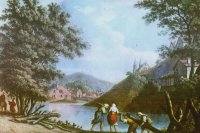 The
city continued to florish after the unification of the romania principalities
in 1859. Ion Luca Caragiale lived here for a short while and it has
been presumed that Pitești may be then unnamed city from his play "O
scrisoare pierdută" ("A lost letter") because Pitești
was dominated by the liberals of that time, as the Brătianu family residence
was nearby in Ștefănești.
The
city continued to florish after the unification of the romania principalities
in 1859. Ion Luca Caragiale lived here for a short while and it has
been presumed that Pitești may be then unnamed city from his play "O
scrisoare pierdută" ("A lost letter") because Pitești
was dominated by the liberals of that time, as the Brătianu family residence
was nearby in Ștefănești.
In 1872 a railway is built between Pitești and the capital (București), at the same time as the railway segments linking it to Târgoviște and Ploiești. Construction was supervised by Bethel Henry Strousberg on behalf of the German Empire and is the second railway in Romania (after the first one between București and Giurgiu built in 1869). City hall was finished in 1886 and today is host to the Art Galler. The Argeș Prefecture building was designed by Dimitrie Maimarolu and build between 1898 and 1899 on the site of an old orthodox hermitage. Today is the museum of history and nature.
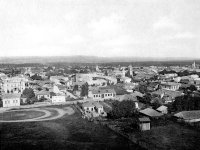 Din
toamna lui 1916 Pitești ws occupied by the Central Powers in the fall
of 1916 after being abandoned by the romanian army. The german commander
August von Mackensen captured the city once the front along the Olt
river stabilized, before the capture of Bucharest and the south of the
country.
Din
toamna lui 1916 Pitești ws occupied by the Central Powers in the fall
of 1916 after being abandoned by the romanian army. The german commander
August von Mackensen captured the city once the front along the Olt
river stabilized, before the capture of Bucharest and the south of the
country.
After WWI, Pitești becomes a a regional cultural center. The magazine Kalende was published between 1928 and 1929 (published by literary critics Vladimir Streinu, Șerban Cioculescu, Pompiliu Constantinescu and Tudor Șoimaru).
WWII and then the communist regime left a significant mark on the city. In 1940, right after the proclamation of the National Legionary State by the Iron Guard, the bronze bust of the former prime minister Armand Călinescu (also assassinated by the Iron Guard) was dragged by chains around the city. In December 1943, under marshal Ion Antonescu, many locals were deported to Transnistria, at the time occupied by the romanian army. The city was briefly bombed by the allies in 1944.
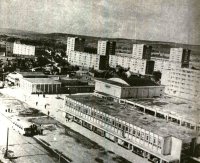 In
the 50s the city becomes the capital of the newly formed "Argeș"
region, then gains the the dark fame of it's own prison după care dobândește
faima funestă pe care i-au adus-o propria închisoare, folosită de regimul
comunist pentru "reeducarea" deținuților politici. "Experimentul
Pitești" s-a aflat sub supravegherea lui Alexandru Nicolschi, care
încuraja violența între deținuți, devenită chiar obligatorie, și urmărea
de fapt distrugerea psihologică a individualității, a convingerilor
și loialității deținutului. Practic a fost o metodă brutală de spălare
a creierului și de transformare a deținuților politici în "oameni
noi", asa cum trebuiau să fie într-o societate leninistă. Experimentul
a fost anulat după cinci ani, iar ulterior 22 de deținuți participanți
au fost judecați și condamnați (dintre care 16 condamnați la moarte)
pentru rolul lor în experiment. Un alt proces, avut loc în 1957, a condamnat
pe unii gardieni și angajați ai închisorii, dar aceștia au primit sentințe
ușoare, ulterior fiind grațiați.
In
the 50s the city becomes the capital of the newly formed "Argeș"
region, then gains the the dark fame of it's own prison după care dobândește
faima funestă pe care i-au adus-o propria închisoare, folosită de regimul
comunist pentru "reeducarea" deținuților politici. "Experimentul
Pitești" s-a aflat sub supravegherea lui Alexandru Nicolschi, care
încuraja violența între deținuți, devenită chiar obligatorie, și urmărea
de fapt distrugerea psihologică a individualității, a convingerilor
și loialității deținutului. Practic a fost o metodă brutală de spălare
a creierului și de transformare a deținuților politici în "oameni
noi", asa cum trebuiau să fie într-o societate leninistă. Experimentul
a fost anulat după cinci ani, iar ulterior 22 de deținuți participanți
au fost judecați și condamnați (dintre care 16 condamnați la moarte)
pentru rolul lor în experiment. Un alt proces, avut loc în 1957, a condamnat
pe unii gardieni și angajați ai închisorii, dar aceștia au primit sentințe
ușoare, ulterior fiind grațiați.
Autostrada A1, prima de acest fel din România a fost terminată în anii '60, odată cu accelerarea industrializării regiunii, în special industria chimică și a automobilelor. În jurul anului 1950, în zonă au fost primiți refugiați greci, partizani ELAS în timpul războiului civil, iar clădirile în care au locuit aceștia au fost folosite apoi pentru țărani strămutați la oraș. Vila Florica a fost devastată de activiști comuniști iar bustul lui Ion Brătianu din fața bisericii Sf. Nicolae a fost luat și topit, iar biserica demolată.
Pitești este unul dintre cele mai puternic industrializate orașe din România. Automobile Dacia, cel mai mare producător de automobile român se află la Mioveni, lângă Pitești, iar în oraș activează o serie de alți producători de piese auto (Dräxlmaier Group, Lear Corporation și Valeo). Arpechim, membră a grupului Petrom, a moștenit rafinăria construită în perioada comunistă.
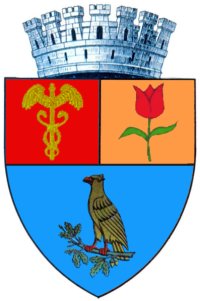
Pitești lays in the mid-south of Romania between the Carpathian mountains and the Danube, also in the north-west of Muntenia. Within the city, the river Râul Doamnei flows into the river Argeș. Pitești is situated at 250 m above sea level (Argeș river, in the south), and 356 m above sea level in Trivale neighborhood (in the west). The city covers 4.073 ha, as of 2003.
The city itself lays between high hills, mostly on the western bank of Argeș river. Climate is moderate, typical of valleys. Annual temperature varies between 9° and 10 °C, with a january average of -2,4 °C, and that of july being +20,8 °C. Rainfall is above the national average, about 680 to 700 mm.
The city is surrounded by hills with vineyards and plum orchards - hence the famous Pitești plum brandy.
Some schools in Pitești: Ion Brătianu and Zinca Golescu high schools, the State University of Pitești and Constantin Brâncoveanu University (private college, founded in 1991).
The majority faith is orthodox christian. There are notable places of worship, some with a long history. Trivale Monastery dates from the 15th century and is well known for it's monks performing exorcism.
Each spring the city of Pitești is the host of a flower festival and fair : "Simfonia Lalelelor" ("The Tulip Symphony"). Tulips were first brought to Pitești around 1972-1973, when an amateur gardener planted in the city centre 3000 bulbs brought in from Arad and Oradea. Thus the city gained it's fame as the city of the tulips and the first flower festival took place in 1978.
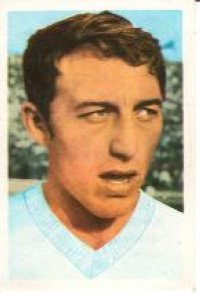 Nicknamed
"the king of sports", soccer is the sport here. "Nicolae
Dobrin" stadium is host to FC Argeș team. Internațional Pitești,
second league team trains at the "Ștrand" stadium. Among other
sports, basketball, voleyball and swimming could be mentioned, including
the olympic swimming pool of CSM Pitești. The romanian national canoe
team also trains on the nearby lake Bascov.
Nicknamed
"the king of sports", soccer is the sport here. "Nicolae
Dobrin" stadium is host to FC Argeș team. Internațional Pitești,
second league team trains at the "Ștrand" stadium. Among other
sports, basketball, voleyball and swimming could be mentioned, including
the olympic swimming pool of CSM Pitești. The romanian national canoe
team also trains on the nearby lake Bascov.
 Română
Română English
English
 Facebook
Facebook


